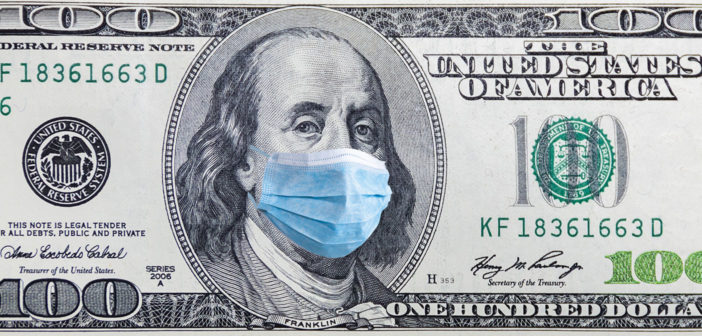The COVID-19 coronavirus spooked the markets. The Dow Jones Industrial Average lost nearly 3,600 points during the last week in February, and had large swings the following week.
The market’s concern is not related to the “human cost” of the virus – the virus’ infection rate is low. At this writing, China had roughly 80,000 cases of COVID-19. The majority were concentrated in Wuhan, a city of more than 11 million, meaning the infection rate was less than 1%. Hong Kong, a city of more than seven million people, only had 100 cases. The U.S., similarly, had a small number of infected relative to population. In contrast, during the 2019-20 flu season, the U.S. had 32 million flu illnesses, corresponding to 10% of the population, leading to 310,000 hospitalizations and 18,000 deaths. The market continued to rally during the severe flu season, indicating that the market’s concern is not that COVID-19 would present a severe health risk to Americans.
The market’s concern is the disruption to everyday life that may result from COVID-19 shutting down manufacturing in China, as well as cancelling travel and events. Big losers during the market sell-off included the airlines, Tesla (which depends on China for rare earth elements for its batteries), and cruise ship companies. This concern is justified. China’s Purchasing Managers Index (PMI) for manufacturing fell to 35.7 in February, down from 50 in January. A PMI below 50 indicates a contraction. This decrease is substantial and is equivalent to the decrease in the U.S.’s PMI during the Great Recession.
Given the dependency of American corporations to manufacturing in China, the contraction in China’s manufacturing sector could cause a recession in the U.S. This is a textbook case of a supply shock, which is defined as an unexpected, temporary event that makes it more difficult to produce output. Supply shocks are common causes of recessions. Examples include the Middle East oil embargo, which lead to the 1973-75 recession; the increase in the price of crude oil due to the Iranian Revolution, which lead to the 1980 recession, and the doubling of the price of crude oil following Saddam Hussein setting Kuwait’s oil wells on fire during his withdrawal from the country in the first Gulf War, which lead to the 1990-91 recession.
These recessions are as mild or severe as the supply shock. The Middle East oil embargo tripled oil prices over an extended time, leading to an 18-month-long recession. In contrast, the 1990 oil price increase was a brief blip, leading to a mild eight-month recession. If there is a recession due to COVID-19, the severity of it will be determined by the severity of the disruption caused by the outbreak.
Such a recession would pose a threat to President Trump’s re-election, as a president’s re-election is historically determined by the state of the economy. The mild 1990-91 recession was little comfort to President George H.W. Bush, who lost re-election to Bill Clinton off of the slogan “it’s the economy, stupid.”














